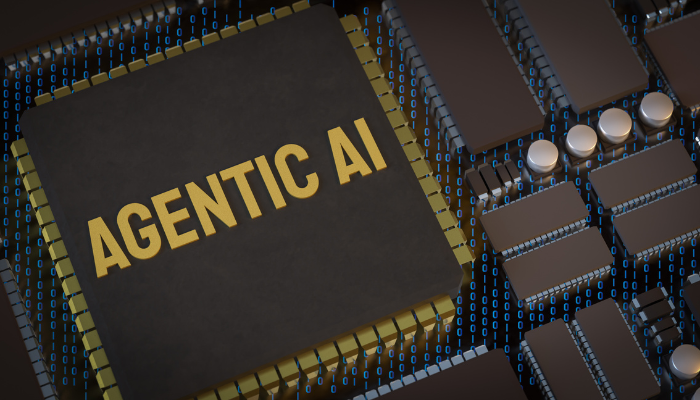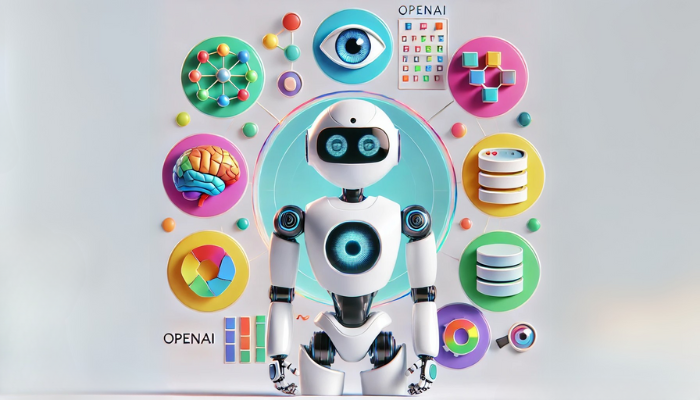A few decades ago, when the IT revolution started, the world opened its eyes to the potential of computers, technology, and robotics. It was merely a fragment of imagination back then to think that machines would someday change the world as we know it, contributing to the workforce and taking the load off of humans.
Today, that world already exists. Artificial Intelligence (AI) is altering how industries function across the globe, and at the heart of this transformation are AI agents. These systems are designed to perform tasks independently, interacting with their environment and making data-based decisions.
Based on their research on agentic AI, Gartner predicts that by 2029, agentic AI can independently handle 80% of common customer service problems without needing human assistance, resulting in a 30% decrease in operational expenses. This sounds intriguing.
However, this also leads us to the question of what agentic AI is and how it operates. Let’s find an answer to this question in this blog. Here, we will explore everything about what AI agents are, how they function, and how they’re shaping the future of various industries.
What is Agentic AI & What are its Core Characteristics?
Agentic AI refers to the type of AI designed to operate autonomously or semi-autonomously, capable of performing tasks without needing constant human intervention. These AI systems are not just rule-based; they perceive their environment, process this information, reason through various scenarios, and take actions to accomplish specific goals.
The key distinguishing factor is that AI agents do not simply follow pre-programmed instructions. Instead, they have the flexibility to adapt and change their behavior based on new data and experiences, making them more dynamic and versatile compared to traditional AI models. The core capabilities of agentic AI include:
1. Autonomy
AI agents stand out due to their autonomy. Unlike traditional software that requires detailed programming for every step, AI agents operate independently, making decisions and performing tasks without constant human supervision. Whether managing supply chains, controlling robots, or offering personalized experiences, they analyze data, make decisions, and take action autonomously. For example, in self-driving cars, AI navigates traffic and adjusts routes without human input.
2. Adaptability
AI agents are inherently adaptive. They adjust their behavior based on new or changing conditions. For instance, an AI monitoring financial transactions can evolve to detect emerging fraud patterns, improving its detection methods over time. Unlike traditional systems requiring manual updates, AI adapts in real-time, enhancing its functionality. A customer service chatbot, for example, can refine its responses based on ongoing interactions and feedback.
3. Interaction with the Environment
AI agents actively engage with their environment, gathering data from sensors, smart devices, or user interfaces. This interaction is crucial to their decision-making process. In a smart home, for instance, an AI agent can control devices like thermostats or security cameras, making decisions such as adjusting the temperature or alerting homeowners to potential security risks, all without human input.
4. Learning and Improvement
AI agents can learn and refine their function over time. Using machine learning algorithms, they evolve by refining predictions, decision-making, and responses based on accumulated data. In e-commerce, for instance, AI agents analyze user behavior and adjust product recommendations accordingly, enhancing both the shopping experience and sales performance.
5. Decision-Making Capabilities
AI agents excel in decision-making, using algorithms like deep learning and reinforcement learning to synthesize large data sets. These capabilities allow them to tackle complex tasks with efficiency and accuracy. In healthcare, for example, an AI agent analyzes patient data, offering doctors treatment recommendations tailored to the patient’s unique needs, leading to faster, more accurate decisions.
If you’re looking for experts to develop customized AI solutions that boost your business, look no further than Codewave. We bring personalized systems that work in coherence with your business goals and ensure efficient management.
Now that we know what exactly agentic AI is capable of, let’s understand the distinction between multi-agentic AI and traditional AI.
Also Read: Building Agentic AI Systems in Python: A Beginner’s Guide
Comparison to Traditional AI Models
While traditional AI models focus on executing predefined tasks with little or no flexibility, AI agents go a step further by enabling dynamic interactions with the environment. Traditional AI systems, such as expert systems, rely on a fixed set of rules. In contrast, AI agents can learn from data, adapt to new conditions, and make decisions on their own.
| Feature | Traditional AI Models | AI Agents |
| Flexibility | Limited flexibility, performs tasks based on predefined rules. | Highly flexible, capable of adapting and learning from the environment. |
| Learning Ability | No learning; operates based on a fixed set of rules and patterns. | Can learn from data and improve over time through experience. |
| Adaptability | Struggles with new, unforeseen scenarios. | Adapts to new conditions and can handle changes in real-time. |
| Task Complexity | Best suited for simple, repetitive tasks with known inputs. | Well-suited for complex, dynamic tasks, such as real-time decision-making. |
| Decision-Making | Follows predefined rules, with limited or no room for deviation. | Makes autonomous decisions based on dynamic input and analysis. |
| Interactivity | Limited interaction with the environment, mainly reactive. | Can interact with the environment, users, and data dynamically. |
| Use Cases | Often used in environments where conditions are stable and predictable. | Ideal for environments that are constantly changing or where human-like decision-making is needed. |
Now that we have a better understanding of traditional vs multi-agentic AI, let’s understand how these AI learns and adapts on the go. Let’s focus on this aspect a little more.
How Agentic AIs Learn and Adapt
AI agents advance over time by learning from their experiences. This learning capability enables them to perform tasks more efficiently as they gather more data. Through this process, AI agents become better at predicting outcomes, making decisions, and handling unforeseen situations.
Types of Agentic AI Learning
AI agents learn in various ways. Here are the three main types of learning methods in AI, each of which is crucial in the development of intelligent agents.
1. Supervised Learning
In supervised learning, the AI learns from labeled data, where each input is paired with the correct output. The model uses this data to predict outcomes for new, unseen inputs. It’s commonly used in tasks like image classification and spam detection, where the model learns to make predictions based on past examples.
2. Unsupervised Learning
In unsupervised learning, the AI explores data without labeled outcomes. The goal is to identify patterns, clusters, or associations within the data. This method is used for tasks like customer segmentation and anomaly detection, where the AI uncovers hidden structures on its own without prior guidance.
3. Reinforcement Learning
Reinforcement learning involves the AI learning through trial and error, getting rewards or penalties based on its actions. It interacts with an environment, continuously refining its strategy to maximize long-term rewards. This method is widely applied in areas like robotics, game playing, and autonomous driving.
Together, they enable AI systems to perform a wide variety of tasks, from classification and prediction to optimization and autonomous decision-making.
This is convincing enough to boost your business processes with agentic AI. Now that you’re considering it, let’s understand the core components of AI agents more deeply.
The Anatomy of AI Agents
AI agents are sophisticated systems that combine various components to perform tasks autonomously. These components allow them to interact with the information in their surroundings, make judgments, learn from experience, and adapt to new situations. Here’s a detailed breakdown of the core components of AI agents:
1. Perception: Data Sensing Capabilities
Perception is the first step in an AI agent’s decision-making process. This component involves the agent’s ability to sense and interpret data from the environment. Whether through cameras, microphones, or data inputs from sensors, AI agents use these capabilities to gather information, which is crucial for making informed decisions.
Just like we use our eyes, ears, and skin to sense the world, AI agents use tools like:
- Cameras to “see” (e.g., spotting objects or people)
- Microphones to “hear” (e.g., recognizing voice commands)
- Sensors to “feel” (e.g., detecting temperature or movement)
All of these tools feed data into the AI so it knows what’s happening around it.
For example, a self-driving car has cameras and radar sensors. These help it “see” the road, recognize traffic signs, watch for people crossing, and detect other vehicles. If there’s a red light, the car notices it through its camera. If someone suddenly steps into the street, the sensors pick that up too.
Even smart speakers use perception. When you say “play music,” the device hears your voice through its microphone. That’s perception in action—it’s how the AI listens and gathers your command.
2. Cognition: Processing and Decision-Making
Once data is gathered, it’s processed using advanced algorithms to make sense of the environment. The cognition phase involves reasoning, pattern recognition, and decision-making. AI agents utilize various models, such as machine learning and deep learning, to interpret data and choose the best course of action. This is the “brain” of the AI agent.
In this step, the AI:
- Sorts and organizes the information
- Recognizes patterns and trends
- Figures out what’s happening and what to do next
To do all this, AI agents use machine learning or deep learning, as these are systems trained with lots of data that help the AI learn from past experiences.
Let’s go back to the self-driving car. Once it “sees” a red light through its camera (perception), it has to figure out what that means (cognition). It knows that a red light means “stop,” so it starts slowing down.
Another example is a chatbot. When you type, “I want to cancel my order,” the chatbot doesn’t just see the words; it understands what you’re trying to do. It recognizes that you want help canceling something and then figures out the next best step, like asking for your order number or checking your order status.
3. Action: Executing Decisions
The final step is action. Based on the decisions made during cognition, AI agents take action by executing a command or performing a task. This could involve moving a robotic arm, generating a recommendation, or displaying information to the user.
Depending on the situation, the action can be:
- A physical movement, like a robot arm picking up a package
- A response, like a chatbot sending a reply
- A decision, like approving a loan application or recommending a movie
In a self-driving car, once it understands that there’s a red light, the action is simple: it hits the brakes and stops the car.
In a smart warehouse, once the system sees that a shelf is low on inventory and understands the need to restock, the AI sends a command to a robot to bring more items.
In business, AI might automatically send emails to customers, assign support tickets, or adjust prices on an e-commerce site, without a human needing to step in. Sure, a human is needed to keep a check. However, the primary tasks are automated reducing the cost and human effort.
Let’s see how this process is significant when it comes to intuitive user interaction.
Also Read: AI Agents Transforming Retail and E-Commerce
Significance of User Interface in Adapting Agentic AI
User interaction (UI) and interface design are crucial factors in defining the effectiveness and adoption of AI systems. These elements directly impact how users perceive and engage with AI agents, whether they are virtual assistants, chatbots, or any other form of AI-powered tools. Let’s understand the importance of a strong UI in adapting agentic AI systems.
- Ease of Use: An intuitive UI ensures that users can communicate effortlessly with AI systems, whether through text, voice, or touch. The simpler and more logical the interface, the better the user experience.
- Seamless Interaction: A well-designed UI minimizes confusion and makes navigation smooth, allowing users to complete tasks with minimal effort.
- Consistency Across Platforms: An intuitive UI should work seamlessly across multiple devices (smartphones, voice assistants, etc.), maintaining a consistent user experience.
Take, for example, virtual assistants like Siri and Alexa that rely on simple, intuitive interfaces to provide users with easy access to information, making them more widely adopted and effective.
Besides UI, Natural Language Processing plays an important role in communication between users and agents.
Natural Language Processing for Communication
At the core of AI interaction is Natural Language Processing (NLP). This technology allows AI agents to understand, interpret, and generate human language, enabling communication in a way that feels natural and intuitive to the user. Here’s how NLP adds to the versatility of agents in following commands and conversations.
- Understanding Language: NLP allows AI agents to comprehend, process, and respond to human language, whether spoken or written. This enables natural, fluid interactions.
- Context Awareness: NLP helps AI understand the context of queries, ensuring that responses are relevant and accurate. For example, it can interpret ambiguous questions like “Do I need an umbrella today?” and provide a weather-based answer.
- Conversational Abilities: NLP enables AI agents to engage in back-and-forth conversations, making the interaction feel more human-like.
- Real-Time Processing: With NLP, AI can process queries instantly, allowing for quick responses and real-time support.
For example, Google Assistant uses NLP to recognize and respond to complex voice commands, making it highly functional and versatile.
For businesses looking to adopt Agentic AI solutions with seamless interaction and intelligent communication capabilities, Codewave offers the proficiency to bring your vision to life. Explore our services and learn how we can help you integrate AI-driven tools into your operations. We also offer audits done within a week to identify and enhance your UX/UI designs with AI adaptability in mind.
Moving ahead, let’s take a focused look at planning and executing agentic AI in your business operations.
Also Read: The Best Agentic AI Frameworks and Tools
Planning and Execution of Agentic AI Models
The successful implementation of Agentic AI requires careful planning, strategic execution, and continuous optimization. The entire process involves several stages, each aimed at ensuring the AI system aligns with the business goals and delivers maximum value.
1. Defining Clear Objectives and Goals
Start by defining the specific business problems the AI will solve. Set measurable objectives that align with your company’s strategic goals, like reducing operational costs or improving customer service. Clear goals help determine the scope and ensure the AI system adds tangible value.
2. Identifying the Right AI Technology
Choose the right AI technologies based on the tasks at hand. Machine learning (ML) is ideal for predictive tasks, while Natural Language Processing (NLP) enables communication-based tasks. Automation technologies, like Agentic Process Automation (APA), handle repetitive tasks and streamline decision-making.
3. Data Collection and Preparation
AI thrives on quality data. Identify the data sources necessary for training the AI and ensure the data is clean, structured, and compliant with privacy regulations. Data preparation ensures the system learns effectively and provides accurate results.
4. Designing the AI System Architecture
Develop a scalable, modular AI architecture that can grow with your business. This includes integrating AI components like ML models and NLP into your existing infrastructure, ensuring smooth collaboration with other systems like CRM or ERP, and maintaining consistency across platforms. Codewave helps you develop and integrate these systems seamlessly and efficiently by customizing AI tools to your business needs.
5. Development and Training
Create machine learning models and train them using prepared data. Iterate through testing to refine the AI’s accuracy, and select algorithms that fit the specific tasks, whether it’s recognizing patterns, understanding language, or automating processes. Continuous feedback during training ensures improvement.
6. Deployment and Integration
Deploy the AI system in phases, starting with a pilot project. Ensure the AI smoothly integrates with existing systems, allowing it to enhance current workflows without disrupting business operations. Real-time monitoring during deployment helps address any initial issues.
7. Continuous Improvement and Optimization
AI systems require ongoing optimization to stay effective. While agentic AI can already do so, it’s still necessary to perform regular checks. Collect feedback, retrain models with new data, and tune performance to improve accuracy, efficiency, and scalability. This iterative process ensures the system remains aligned with business needs and adapts to changes over time.
8. Ensuring Ethical AI Use
Last but not least, ethical standards should be maintained by regularly assessing AI for biases and ensuring transparency in decision-making processes. Incorporate accountability measures so users can trust the system’s actions, particularly in sensitive areas like healthcare or finance.
Let’s look at the role of external tools and APIs in integrating agent AI models into your business operations model.
Also Read: What is the Difference Between Machine Learning and Business Intelligence?
Agentic AI Tools and Integrations
These tools are typically built to handle specific actions or processes that would otherwise require human oversight. They are designed to work independently, learn from their experiences, and improve their performance over time.
Types of Agentic AI Tools
Agentic AI tools come in various forms, each tailored for different tasks, but all share the goal of making autonomous decisions or executing specific actions without human intervention. Some examples include:
- AI Chatbots and Virtual Assistants: These tools are designed to interact with users, provide customer service, or perform specific tasks like scheduling, answering queries, or troubleshooting issues. Virtual assistants like ChatGPT, Siri, Cortana, Alexa, and Google Assistant are examples of agentic AI systems that can manage daily tasks.
- Automated Process Management Tools: These tools streamline workflows by automating repetitive tasks. For example, robotic process automation (RPA) tools can automatically handle administrative tasks, like data entry or generating reports, reducing the need for human intervention.
- AI-Based Decision-Making Systems: These systems analyze data and make conclusions based on predefined rules or learned patterns. For example, AI systems used in finance can automatically assess risks and make investment decisions, or credit scoring models can evaluate loan eligibility without human input.
- Self-Learning AI: Some AI tools, such as reinforcement learning-based systems, continuously learn from their environment and improve their performance over time. This makes them useful for applications like autonomous vehicles, where the AI must make real-time decisions based on changing surroundings.
Integrating Agentic AI Tools
The integration of agentic AI tools with existing systems is a key part of their effectiveness. These tools can be integrated into various software platforms to enhance performance, automate processes, and improve user experience.
- API Integrations: Many AI tools offer APIs (Application Programming Interfaces) that allow them to connect effortlessly with existing software systems. This enables businesses to integrate agentic AI into their current workflows, from CRM systems to ERP platforms, automating tasks such as data analysis, reporting, or customer support.
- Cloud-Based Integrations: Agentic AI tools are often integrated with cloud-based platforms like AWS, Microsoft Azure, or Google Cloud. Cloud integration allows AI systems to scale easily, process large datasets, and utilize advanced machine learning models for various applications.
- E-commerce Integrations: In the e-commerce space, agentic AI tools can be integrated with platforms like Magento, Shopify, or WooCommerce to manage inventory, customer interactions, and product recommendations. These tools can automate customer service via AI chatbots, recommend products based on browsing history, and manage inventory without human oversight.
- CRM and Marketing Automation: Agentic AI tools can be integrated with CRM systems like Salesforce, HubSpot, or Zoho to automate customer interactions, sales processes, and marketing campaigns. These integrations help businesses provide personalized, real-time experiences to their customers while reducing manual work.
- IoT (Internet of Things) Integrations: Agentic AI can also work seamlessly with IoT devices. For instance, in smart homes or industrial settings, AI systems can be integrated with sensors and smart devices to automate everything from lighting and climate control to predictive maintenance in machinery.
This gives us a fair idea of where and how agentic AI can be implemented and utilized to the best of its potential. Meanwhile, you might encounter some challenges while using agentic AI. Here is a more detailed look at the same.
Challenges in Using Agentic AI
While agentic AI offers tremendous potential, it also presents several challenges, including data privacy concerns, bias, integration complexities, and ethical dilemmas. Organizations must address these obstacles carefully to ensure that AI systems are reliable, transparent, and aligned with legal and regulatory standards.
1. Data Privacy and Security
Agentic AI systems handle sensitive data, making them vulnerable to cyberattacks and data breaches. Ensuring strong security measures, such as encryption and access control, is crucial to protect personal information and comply with data privacy laws like GDPR and CCPA.
2. Lack of Transparency
Many AI models, especially deep learning systems, operate as “black boxes,” making it challenging to comprehend how decisions are made. This lack of clarity can erode trust and pose challenges in industries that require explainable decisions, such as healthcare and finance.
3. Bias and Ethical Concerns
AI systems can perpetuate biases in data, leading to unfair or discriminatory outcomes. Addressing bias and ensuring fairness in AI-driven decisions is a critical challenge, particularly in areas like hiring, lending, and law enforcement.
4. Integration and Cost
Integrating agentic AI with existing systems can be complex, especially with legacy infrastructure. Additionally, the high initial cost of development, regular maintenance, and updates can be a hindrance for businesses, particularly smaller organizations.
5. Regulatory and Legal Challenges
Ensuring AI systems comply with evolving regulations is difficult, especially in highly regulated industries. Clear accountability is needed when AI decisions result in negative consequences, and navigating legal concerns can be complex.
How Codewave Helps Integrate AI Models in Your Business
Codewave understands the transformative potential of Agentic AI and how it can reshape your business operations. By developing and integrating advanced AI models, we help businesses harness the power of autonomous decision-making, dynamic adaptability, and real-time learning that agentic AI offers. Whether you are looking to automate customer service, optimize supply chains, or enhance user interactions, Codewave ensures seamless integration of AI solutions tailored to your unique needs. Check out our range of services and to see our work in action, visit our portfolio! here.
Our team of experts works with you through every step from planning, development, and deployment to continuous optimization, ensuring that your AI systems are secure, transparent, and aligned with industry standards. With Codewave’s AI solutions, your business can outperform competitors and adapt to the growing demands of the digital world.
Are you considering partnering with Codewave? Contact us here and let us handle the tedious tasks so you can work on your core business goals.
Codewave is a UX first design thinking & digital transformation services company, designing & engineering innovative mobile apps, cloud, & edge solutions.







